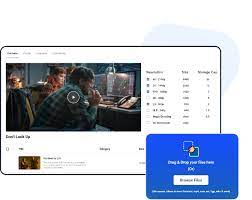The Importance of Video Content Management
In today’s digital age, video content has become a powerful tool for businesses to engage with their audience, convey messages effectively, and drive conversions. However, managing video content can be a complex task that requires careful planning and execution. This is where video content management comes into play.
What is Video Content Management?
Video content management involves the process of organising, storing, distributing, and analysing video assets within an organisation. It encompasses everything from creating videos to publishing them on various platforms and measuring their performance.
The Benefits of Effective Video Content Management
**Improved Organisation:** Proper video content management ensures that all video assets are organised in a centralised system, making it easy to access and share them across teams.
**Enhanced Security:** By implementing access controls and encryption measures, video content management systems help protect sensitive videos from unauthorised access.
**Optimised Distribution:** With a structured approach to video content management, businesses can distribute videos across multiple channels efficiently, reaching a wider audience.
**Better Analytics:** Video content management tools provide valuable insights into viewer engagement metrics, allowing businesses to refine their video strategies for maximum impact.
Key Considerations for Video Content Management
**Quality Control:** Maintaining consistent quality standards across all videos is essential for building brand credibility and engaging viewers effectively.
**Metadata Tagging:** Adding relevant metadata tags to videos improves searchability and helps users find the right content quickly.
**Compliance:** Ensuring that videos comply with legal regulations regarding copyright, data protection, and accessibility is crucial for avoiding potential liabilities.
In Conclusion
Effective video content management is essential for businesses looking to harness the full potential of video marketing. By investing in robust systems and processes for managing video assets, organisations can streamline their workflows, enhance security measures, and drive meaningful engagement with their target audience.
Exploring Video Content Management: Understanding CMS in Broadcasting, YouTube’s System, and Top CMS Choices for YouTubers
- What is CMS in broadcasting?
- Does YouTube use CMS?
- What is a video content management system?
- What is the best CMS for YouTube?
What is CMS in broadcasting?
In the realm of broadcasting, CMS, which stands for Content Management System, plays a pivotal role in streamlining the creation, distribution, and monitoring of video content. A CMS in broadcasting serves as a centralised platform where media organisations can efficiently manage their video assets, schedule programming, and ensure seamless delivery across various channels. By utilising a CMS tailored to the unique needs of the broadcasting industry, companies can enhance workflow efficiency, maintain content consistency, and optimise audience engagement through strategic content placement and monitoring.
Does YouTube use CMS?
One common question regarding video content management is whether YouTube utilises a Content Management System (CMS). The answer is yes, YouTube does have its own CMS that allows content creators and channel owners to upload, organise, and manage their videos on the platform. This CMS enables users to customise video settings, track performance metrics, and monetise their content through advertising. By leveraging YouTube’s CMS, creators can effectively manage their video assets and engage with their audience in a structured and efficient manner within the platform’s ecosystem.
What is a video content management system?
A video content management system (CMS) is a software platform designed to help businesses efficiently organise, store, distribute, and analyse their video assets. It serves as a centralised hub where users can upload, manage metadata, and publish videos across various channels. A video CMS typically offers features such as access controls, analytics tools, and integrations with third-party platforms to streamline the entire video content lifecycle. By utilising a video CMS, organisations can effectively manage their video libraries, ensure content security, and optimise the delivery of engaging visual media to their target audience.
What is the best CMS for YouTube?
When it comes to choosing the best Content Management System (CMS) for YouTube, there isn’t a one-size-fits-all answer as the ideal CMS can vary depending on individual needs and preferences. However, many content creators and businesses find that platforms like TubeBuddy, vidIQ, and Hootsuite offer robust features for managing YouTube content effectively. These CMS options often provide tools for video analytics, keyword research, scheduling posts, and optimising video performance on the platform. Ultimately, the best CMS for YouTube is one that aligns with your specific goals and workflow requirements to help you maximise your presence and engagement on this popular video-sharing platform.


Leave a Reply